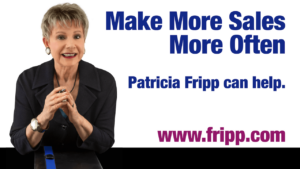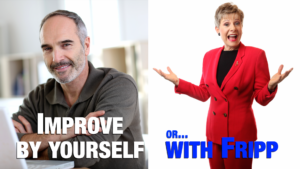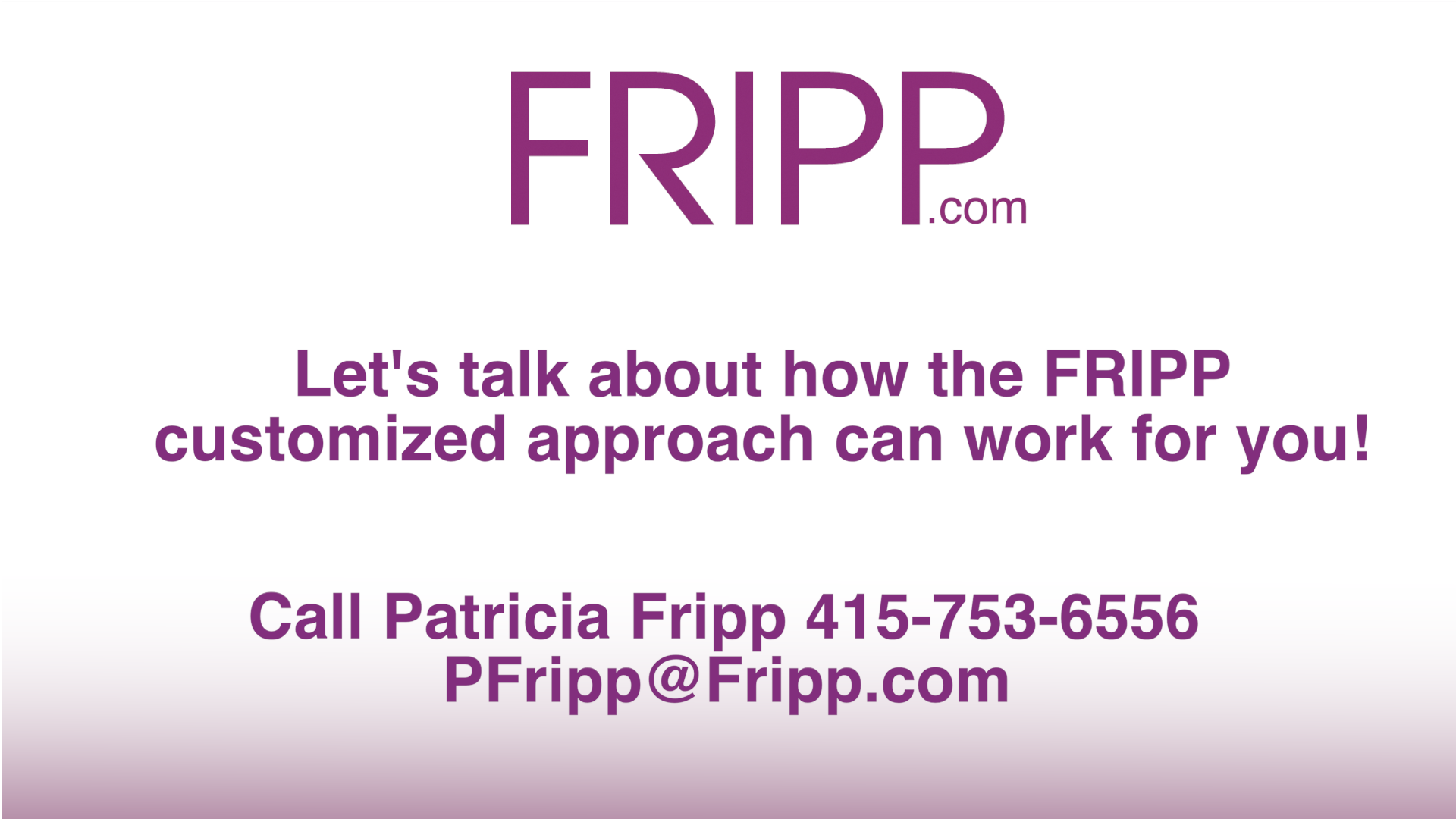Are you losing sales you feel you deserve to win?
Are you confident that everyone on your sales team can deliver your company story well?
Are you making the fatal flaw of many sales managers?

You may be like many of my clients before I work with them. You have great products and services—perhaps complicated and technical in nature—and they require an incredible amount of trust to sell.
You invest in your sales professionals with product knowledge, ways you compare to your competition, territory management, and technology the company uses. Then you say, “Go out and call on the C-Suite.”
However, you may often fall short on training your sales professionals to create and deliver an engaging, clear, concise, and prospect-friendly presentation.
After keynoting a sales conference, Jill, the National Sales Manager, said, “Patricia, I liked your speech. However, I really loved the way you delivered it. Can you teach our sales professionals to speak that way? It takes us a year to be in a position to deliver a one-hour sales presentation to a hospital board. It is worth $9 million dollars a year if we win the business. However, we are losing sales, and it has nothing to do with our product or service. I keep hearing that the presentations from our competition are better than ours.”
Shelley read one of my special reports, 11 Mistakes Sales Professionals Make in Their Presentations, and said, “We are a technology company and hire only seasoned sales professionals with at least 10 years of experience. We naturally assumed they could tell our company story well, until we had them deliver to Senior Management. We were horrified, and I am charged to find the best sales presentation training. I am glad you are only 37 miles from headquarters.”
Every sales manager needs to be confident the team can deliver a compelling presentation. It often takes weeks before you get the next conversation.
As a result, the goal is to burn vivid examples and key ideas into your prospect’s mind.
You want to know they cannot forget what makes you different from your competition. This is especially important if you are one of several individuals or teams competing for the same business.
The structure of your sales presentation is the skeleton under the flesh of your words. This simple, 8-step process frees you to make a seamless argument leading to a conclusion.
The challenge is to design and deliver your presentation in a way to be remembered and repeated. What is the average structure?
“Hi, I am Fred Smith. Let me introduce you to my team: Tom, Dick, and Harriett.

Thank you for your time.
We are from the ABC Company . . .
This is what we do . . .
This is how long we have been in business . . .
This is what we are known for . . .
These are the clients we do business with . . .
We would like to work with you . . .”
That is a dreary, “who cares” presentation at its worst.
At this point in history, especially with big ticket sales, we realize if we get an appointment to speak or deliver to senior level prospects, they already know about your company.
Let us consider a more effective structure. Take these eight steps to create one that’s focused on the potential client:
- Sincere compliment. We will not go wrong to work on the premise that everyone is more interested in themselves and their company than they are in us. Begin with a comment about them that they are proud of and that shows you’ve done your homework:
“Congratulations on the success of your recent product launch.”
“Your latest advertising campaign is spectacular.”
“Your stock price is up three points while most of the market is down. Your strategy is on track.”
- Introduction to their challenge or problem. This is not the time to mention your product or solution. A better approach is to say something about their current interest, challenge, or opportunity. Depending on which phrase they use, you must follow up:
“This is the right time to make a bold move and . . .”
“Your board of directors has challenged you with . . .”
“Your competition is increasing in . . .”
- Differentiate from your competition. Everyone else thanks prospects for their time, so don’t. Instead, say, “Thank you for the opportunity to discuss how our company (be specific with your service or product) can help you accomplish your goals.”
“Minimize your risk in . . .”
“Expand your markets in . . .”
“Demonstrate how your technology will be able to . . .”
- Thank and make heroes of your contacts. If you have a champion or have interacted with individuals who have helped prepare you for the meeting or taken you through the discovery process, it is appropriate to thank them now.
“Thank you, Mike and Theresa, for your generosity of time and knowledge to help us understand the ABC Company’s goals, commitments, and challenges.”
“Mike tells us that your vision is to . . . and that your priorities are . . .”
“In the next thirty minutes (sixty minutes, three hours), you will hear (learn, discover, see demonstrated) how our solution (company, technology, unique methodology) can help you achieve that goal.”
Never say, “I am going to talk about . . .” or “What I would like to do . . .”
- Provide examples, experience, and social proof. Knowing about your product or service is not enough. Your prospect must understand how it could improve their business and how you are not just a salesperson but rather a trusted advisor. Tell stories and give case histories about satisfied clients, using their words about their challenge, then how you solved it, and again, in the happy client’s words, the happy ending. Do this well, and it will be as if you are taking your happy customers and clients on your sales calls.
- Review your key ideas. This can be accomplished with a rhetorical question or a simple statement based on your premise:
“How is ABC Company better off by doing business with us?”
“As you heard, the way our company would approach helping you accomplish your goals . . .”

“The way our technology would increase your efficiency . . .”
“Just like the example of the EDF company, the way our training would improve your associates . . .”
- Head into the close with confidence, not a question. One mistake many of your competitors make is to close after they answer questions. Yes, you take all their questions. “Based on what you have heard, what are your specific questions?” After you answer their questions (and possibly objections), your goal is to drive the sale forward. Depending on the complexity of your offering or how many people are involved, you may want to say:
“At this point, our most logical step is . . .”
“At this point, may I recommend we . . .”
“At this point, most of our best clients elect to . . .”
- Reinforce your key idea. Close on a high and let your last words linger. Make sure they’re yours. Your last words give you a great opportunity to reinforce what makes you the best choice. Good copywriters will tell you they often write the PS of a sales letter first, because it confirms the key idea in the letter. Your approach might sound something like this:
“Again, thank you for the opportunity to demonstrate how our approach could well be what you have been searching for. We look forward to our next meeting. In your discussions, remember the results of [other successful clients you have given examples of].
Remember, “157 profitable quarters.” Or “99% of the Fortune 500 do business with us.” Or “We are large enough to satisfy all your needs, yet small enough that you will always be a VIP client.”
Depending on the situation, you could also talk about how you “Are nimbler than our competition,” “Can get started as soon as you say ‘yes,’” or “Are a one-stop shop.”
Many professionals are fairly smooth when they get into the body of their presentation. Very few, however, know how to open and close effectively and memorably. Take these eight steps you’ve just read, and apply or adapt what is appropriate to your situation. Script your opening and close for specificity and brevity. If you asked one of your sales professionals, “How are you going to open and close next week’s sales presentation,” the automatic response needs to be exactly what they will say.
In this day and age, especially with high-stake sales, it’s essential to assume that your prospects already possess basic knowledge about your company.
Let’s Review the 8 Steps for a Prospect-Centric Sales Presentation
Take a look at how to create a presentation that’s laser-focused on your potential client:
Sincere Compliment. Begin with acknowledging your prospect’s achievements, showing that you’ve done your homework.
Introduce Their Challenge. Highlight their current problem without mentioning your product or solution.
Differentiate from Competition. Express gratitude for the opportunity to discuss how your company can help them achieve their goals.
Appreciate Your Contacts. Thank your contacts who have helped you prepare for the meeting.
Showcase Your Track Record. Share success stories and case histories of satisfied clients to establish trust.
Review Your Key Ideas. Reinforce your main points with rhetorical questions or statements.
Confident Close. Wrap up your presentation by suggesting the next step, not after you answer questions.
Reinforce Your Key Ideas. End on a high note by repeating what sets you apart from your competition.
If you are committed to mastering the art of sales presentations, make it a priority. Make rehearsal an important part of your process.
Many sales presentations start with mundane introductions and unremarkable company information. With high-stake sales, it’s essential to assume that your prospects already possess basic knowledge about your company.
Remember, you now have a new friend who is a presentation skills authority.
“Back in 2018, we invited you to help us with an important sales presentation, which we won. You will be as excited to know that it continues to reap dividends! Last year, we were awarded $1.6 million in business with them. We just received a $2.8 million order from them already this year and it is still January. Your advice and coaching are awesome. What a ROI!” Michael E. Stryczek, President & CEO, AB&R® (American Barcode and RFID)

Need help for you or your team on improving important conversations and presentations? The Fripp Customized Approach will work for you. Contact Fripp today!

